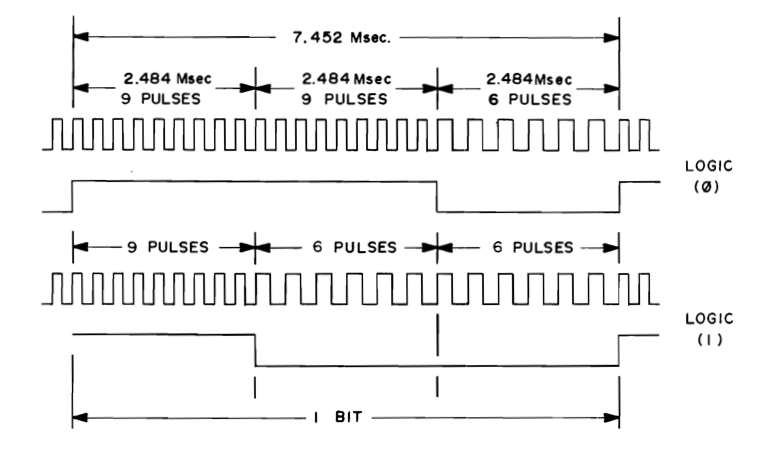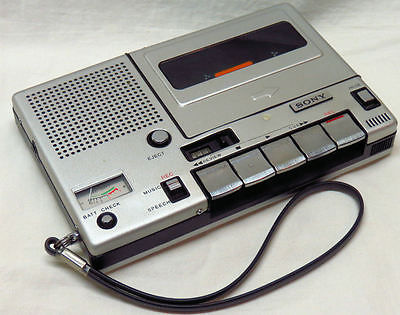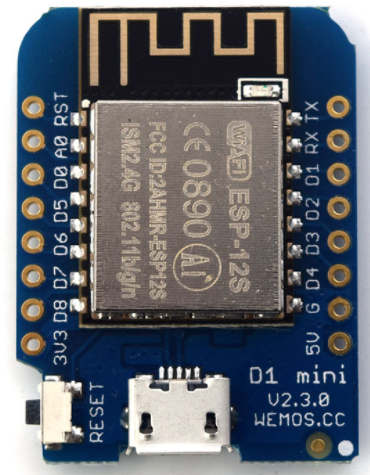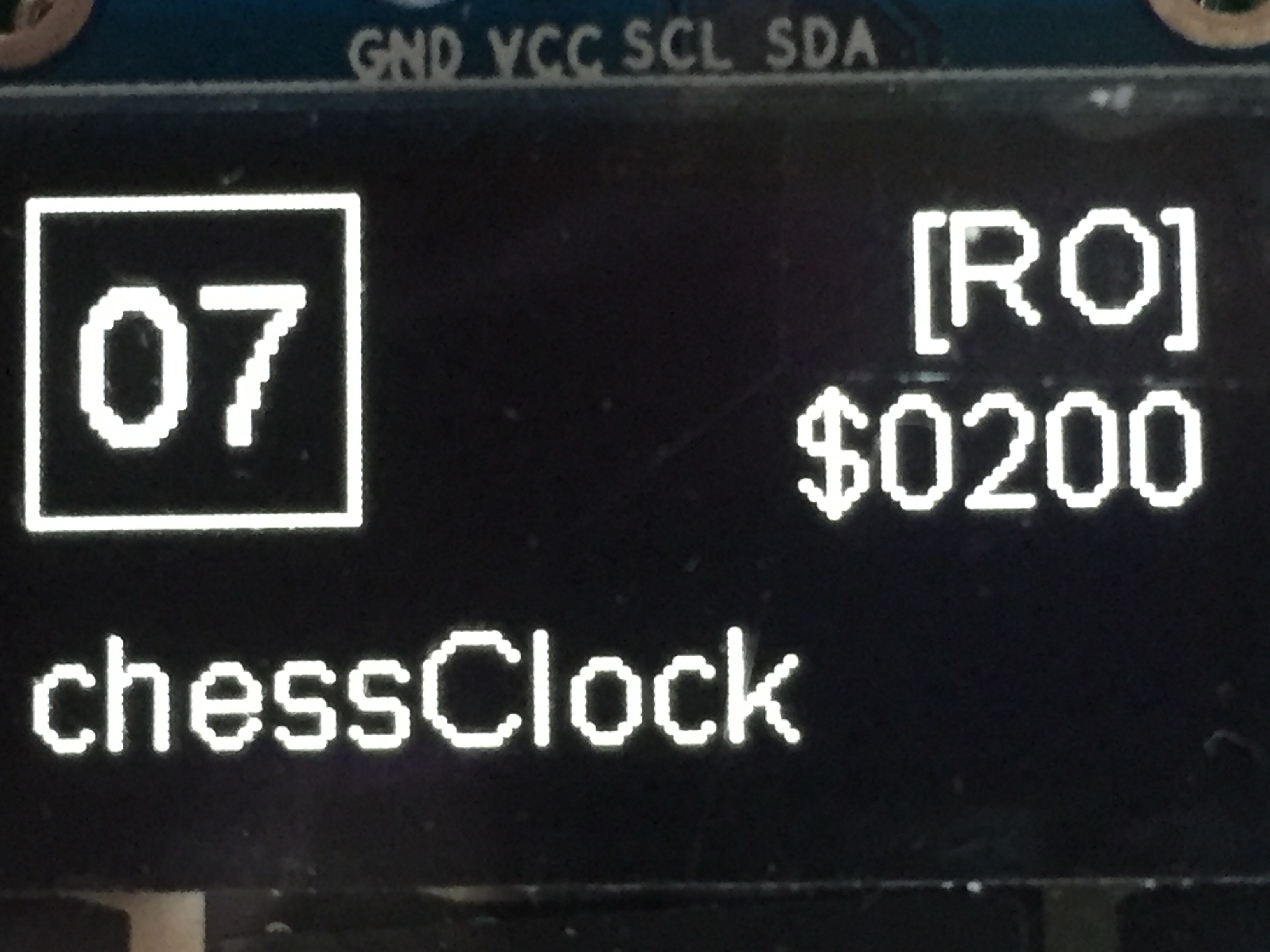This
is a copy of interesting things from a Deuch MAKER, Willem Aandewiel
To
get “the real vintage feeling” I wanted to design a “solid state”
cassette interface that “works” like a real cassette recorder.
 KLIK på billedet for at se det i fuld størrelse... (CVlick for
full size)
KLIK på billedet for at se det i fuld størrelse... (CVlick for
full size)
It
was possible to store more than one program on a cassette tape and by keeping
track of the tape-counter (writing it down on the cassette)
one could position the tape at the start of a particular program, punch in some
magic numbers on the KIM-1, press the “GO” button to start the
tape-loading program and then press the “play” button on the cassette
recorder. Some squeezing sounds (like the one you might know from the
early modems) later and after a few minutes the program was loaded into the
KIM-1.
Recording was similar with some other magic numbers and pressing the
“record” and “play” button on the cassette recorder simultaneously.
A
program is recorded to tape using two frequency’s; 3.623 Hz and 2.415
Hz to convert ‘1’ and ‘0’ bits to a pulse-train.
(page
E-3 of the KIM-1 User Manual)
|
Decoding
the pulse-train
I tried to let the ESP8266 decode this pulse train but the timing
is too tight
to decode the train into bits and also be able to convert
the bits in bytes and
store them to a file. So I fell back to the
mighty little ATtiny85 processor to
convert only the pulse train to
‘1’ and ‘0’ bits and feed the bits to
the ESP8266 for further
handling.
The duration of one bit takes 7.452 milli
seconds.
To
distinguish between a ‘1’ or ‘0’ bit the ATtiny only has to record
the
duration of the change in frequency from long- to short- and
from short- to long-pulses. It starts a timer at the moment the
pulse duration changes from approx. 414 µSeconds to 276
µSeconds. The timer stops at the moment the pulse
changes back
to ~414 µSeconds.
If the duration is shorter than 3.726 milli seconds it has found a ‘1’
and
makes the output pin High and if the duration is longer than
3.726 milli seconds it has found a ‘0’ and it makes the output pin
Low.
To
load a program from the Tape Device to the KIM we can skip
the
modulation to the 3kHz and 2kHz frequency’s and simply feed
the one’s and
zero’s to the KIM.
|
 |
Design
Goals
The Tape Device user interface must consist of the four buttons
found on every
cassette recorder. A “fast rewind”, “record”,
“play” and “fast
forward” button (on the real cassette recorder
there also is a “stop”
button but we won’t use that button in this
design).
Because
of the today’s possibilities and state of technology we
can store a large
amount of program’s on a small device so we
need a way to present to the user
where we are on the “tape”
but we can present more than just a tape-counter.
Wouldn’t it be nice if, besides the tape-counter, there was
room for a
description of the program and maybe the start
address to run the program from.
And because a large number
of program’s can be stored on this device it would
also be nice to
be able to write-protect a program so it can’t accidentally be
overwritten.
|
 |
I
have chosen to use a ESP8266 processor on a small board from
Wemos (the Wemos
D1 mini).
From
the EEPROM memory of the ESP8266 about 3 Megabytes is
used as a filesystem to
store programs.
This Wemos D1 board has an USB port to program the ESP8266
and that port can
also be used as an interface to a computer,
which we will use
to enter a description to
a program and to make
the program Read Only or Read/Writable.
|
 |
For
the display the SD1306 with an I2C interface is perfect.
This picture shows that
as sequence $07
(it’s a hexadecimal number) a program with the description
“chessClock” is stored. The program is “Read Only” and the
startaddress
is $0200.
The KIM is a 5 volt device and the ESP8266 is a 3.3 volt device
(the ATtiny can
be both, but we power it with 5 volt) so to
connect signals to one-another, level
shifters are necessary.
N-Channel MosFets are ideal suited for this task.
|
This
was the hardware design...
The
software for the ATtiny and the ESP8266 can be found on GitHub:
https://github.com/mrWheel/KIM_TapeDevice
And
here you find a short demo of the KIM Tape Device:
https://www.youtube.com/watch?v=R_zD5T_khKs
 KLIK på billedet for at se det i fuld størrelse... (CVlick for
full size)
KLIK på billedet for at se det i fuld størrelse... (CVlick for
full size) KLIK på billedet for at se det i fuld størrelse... (CVlick for
full size)
KLIK på billedet for at se det i fuld størrelse... (CVlick for
full size)